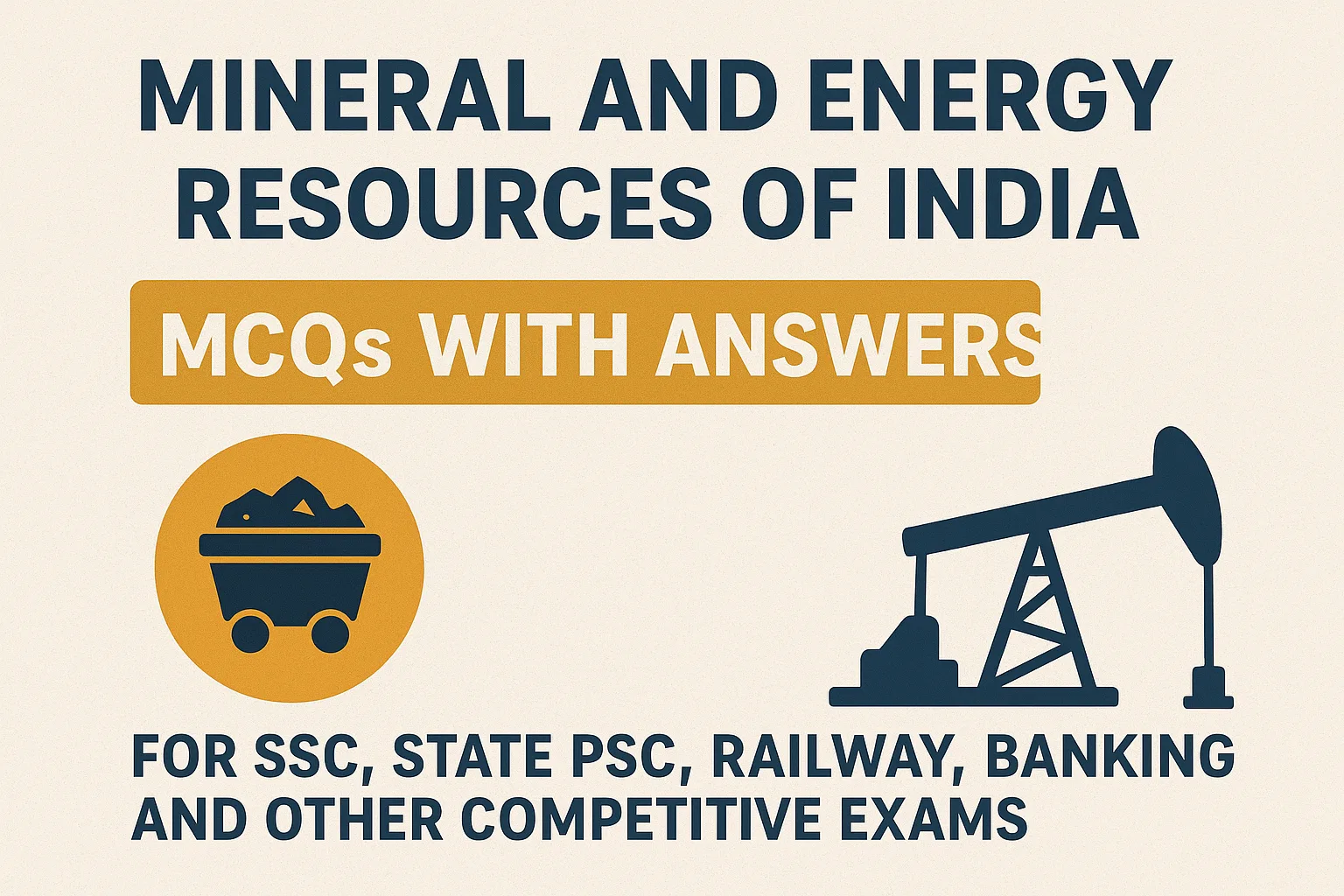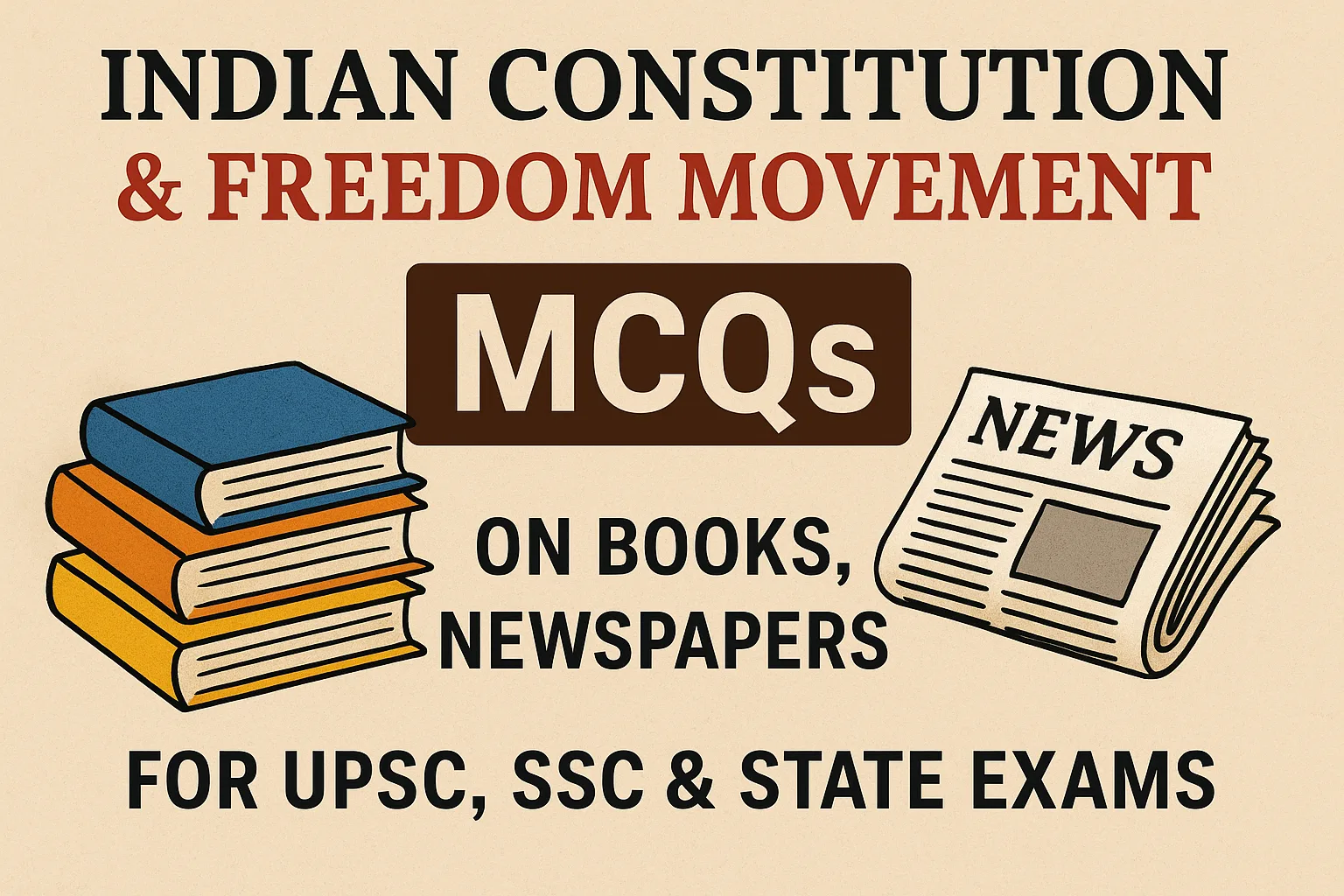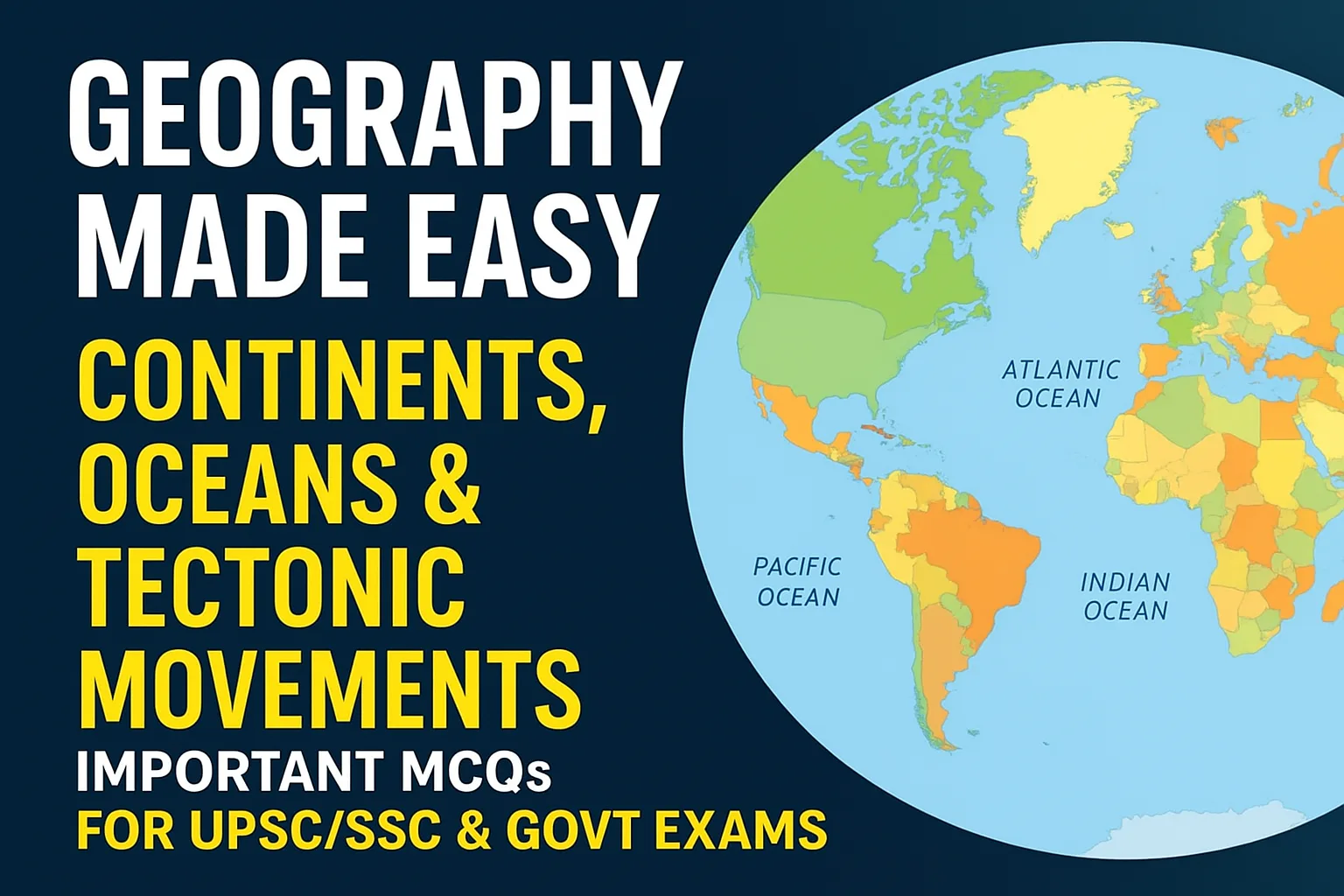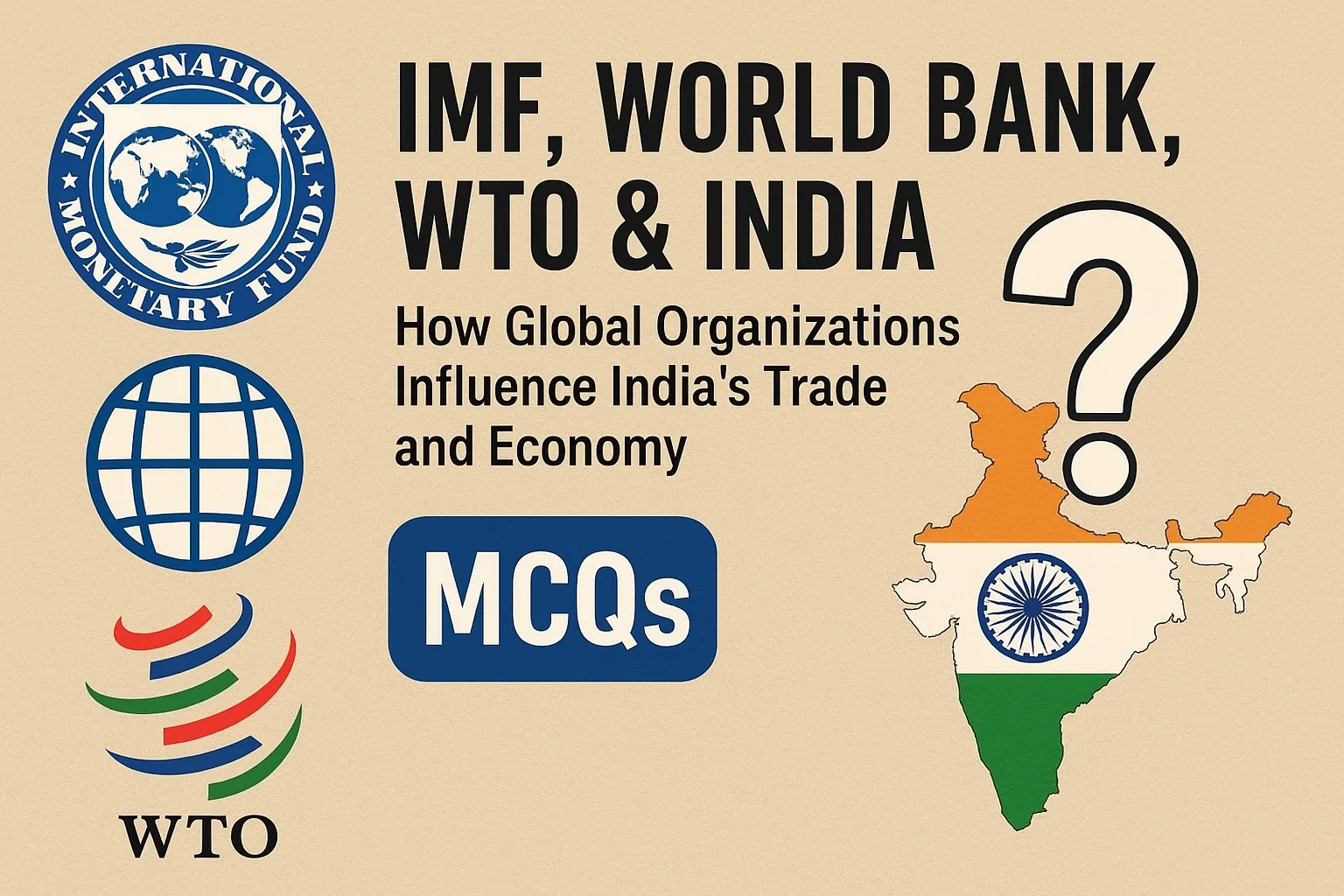Indian Freedom Struggle MCQs: Key Events, Leaders and Movements for Competitive Exams
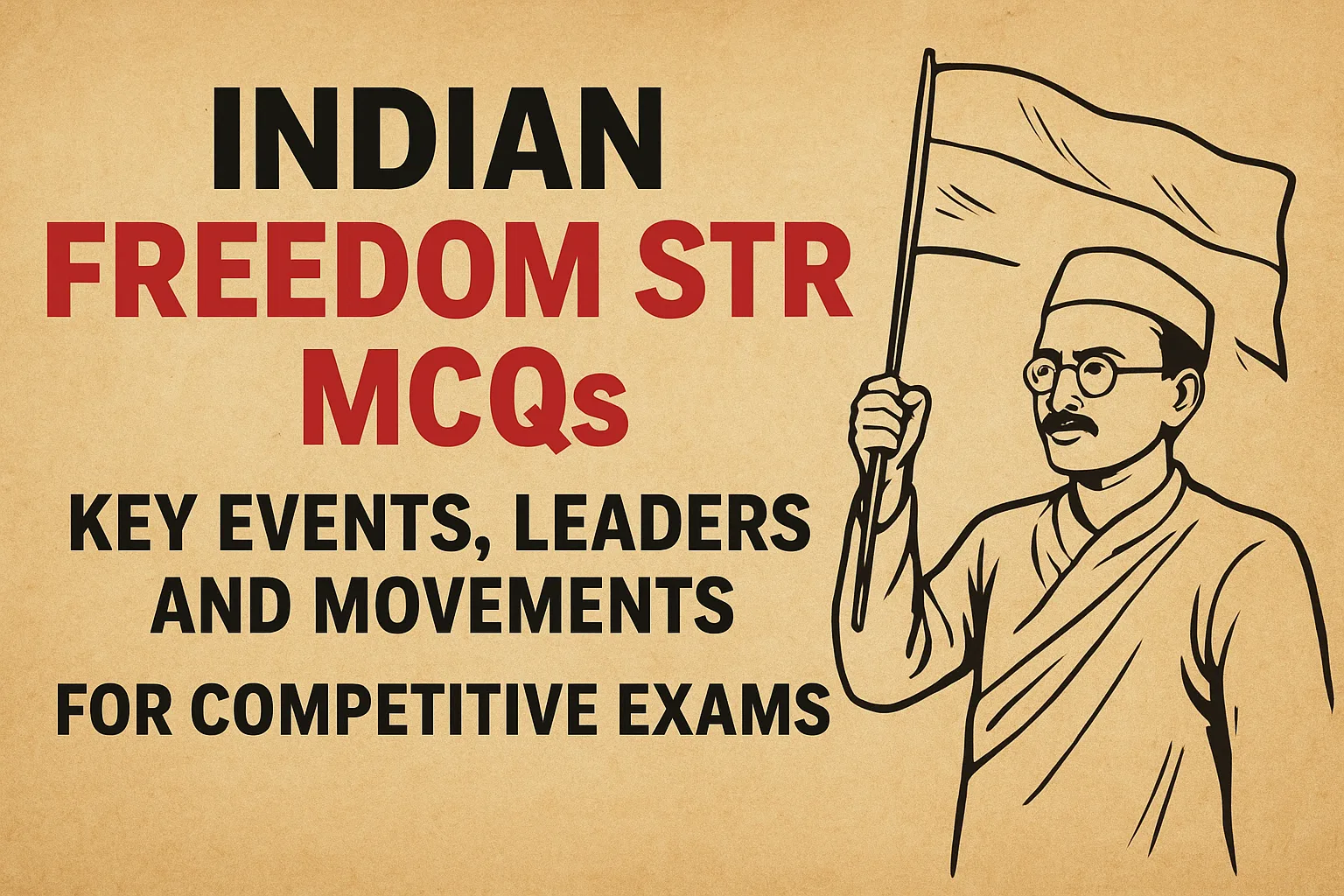
The struggle for freedom in India was a long and arduous journey. This took many forms, political negotiations, revolutionary struggles, and popular movements. The party operated with the help of arms, and the Indian National Congress worked with protests and constitutional means in India. Important incidents such as the Komagata Maru incident, the Surat Split, the Lucknow Pact, the Home Rule Movement, and the Naujawan Bharat Sabha (organisation), Kakori Train Action, and the Lahore session of Purna Swaraj instilled a spirit of revolution in Indians to fight more vigorously for their freedom. Between leaders and revolutionaries, Bhagat Singh, Chandrashekhar Azad, Ram Prasad Bismil, Tilak, Annie Besant, and Gandhi Nehru, former crachent on space separating those who have marked the history of India for centuries. The subsequent MCQs are designed to test your knowledge of these important events and persons in the making of India’s independence.
The Ghadar Party, which aimed to overthrow British rule in India through armed struggle, was originally known as the Pacific Coast Hindustan Association and was founded in which year and place?
a) 1907, Punjab
b) 1913, San Francisco
c) 1916, Calcutta
d) 1919, Lahore
Answer: b) 1913, San Francisco
Who among the following was not associated with the foundation of the Ghadar Party in 1913?
a) Lala Har Dayal
b) Sohan Singh Bhakna
c) Sant Baba Wasakha Singh
d) Jawaharlal Nehru
Answer: d) Jawaharlal Nehru
The Komagata Maru incident of 1914, which highlighted racial discrimination in Canadian immigration policies, involved which group of immigrants?
a) Mainly Hindu peasants from Punjab
b) Mainly Sikh immigrants on a Japanese steamship
c) Muslim merchants from Karachi
d) Bengali revolutionaries from Calcutta
Answer: b) Mainly Sikh immigrants on a Japanese steamship
The passengers of Komagata Maru, denied entry into Canada, were forced to stay onboard under harsh conditions for how long before being sent back to India?
a) Two weeks
b) Two months
c) Six months
d) One year
Answer: b) Two months
The Surat Split of 1907 divided the Indian National Congress into two factions based on ideology. What were these two factions called?
a) Revolutionaries and Reformists
b) Nationalists and Liberals
c) Moderates and Extremists
d) Socialists and Conservatives
Answer: c) Moderates and Extremists
The Extremist faction of the Congress, post-Surat Split, advocated which of the following strategies for independence?
a) Petitioning the British Parliament
b) Boycott of foreign goods and swadeshi movement
c) Peaceful negotiations only
d) Economic concessions from the British
Answer: b) Boycott of foreign goods and swadeshi movement
The Lucknow Pact of 1916, a landmark in Hindu-Muslim unity, saw cooperation between which two organizations?
a) Indian National Congress and Hindu Mahasabha
b) Indian National Congress and All India Muslim League
c) Indian National Congress and Communist Party of India
d) Indian National Congress and Ghadar Party
Answer: b) Indian National Congress and All India Muslim League
At the Lucknow Pact session of 1916, who among the following was the President of the Indian National Congress?
a) Bal Gangadhar Tilak
b) Ambica Charan Mazumdar
c) Annie Besant
d) Motilal Nehru
Answer: b) Ambica Charan Mazumdar
9. Sarojini Naidu described Muhammad Ali Jinnah as the “Ambassador of Hindu-Muslim Unity” during which historic agreement?
a) Poona Pact
b) Lucknow Pact
c) Delhi Pact
d) Cabinet Mission
Answer: b) Lucknow Pact
The Indian Home Rule Movement, inspired by the Irish Home Rule Movement, was primarily led in India by which two leaders?
a) Bal Gangadhar Tilak and Annie Besant
b) Lala Lajpat Rai and Bipin Chandra Pal
c) Subhas Chandra Bose and Mahatma Gandhi
d) Dadabhai Naoroji and Gopal Krishna Gokhale
Answer: a) Bal Gangadhar Tilak and Annie Besant
Tilak launched the Indian Home Rule League in April 1916 at Belgaum. Where did Annie Besant launch her Home Rule League later that year?
a) Lahore
b) Madras
c) Bombay
d) Allahabad
Answer: b) Madras
In 1920, the All India Home Rule League changed its name to which of the following?
a) Swarajya Sabha
b) Azad Hind Sabha
c) Indian National League
d) Swatantrata Sabha
Answer: a) Swarajya Sabha
The Flag Satyagraha of 1923, aimed at asserting the right to hoist the nationalist flag, was organized in which Indian city?
a) Lahore
b) Nagpur
c) Bombay
d) Calcutta
Answer: b) Nagpur
The Hindustan Republican Association (HRA), founded in 1924 with the aim of establishing a “Federated Republic of the United States of India,” included which prominent revolutionary?
a) Bhagat Singh
b) Chandrashekhar Azad
c) Ram Prasad Bismil
d) Subhas Chandra Bose
Answer: c) Ram Prasad Bismil
In 1928, the Hindustan Socialist Republican Association (HSRA) was formed at Feroz Shah Kotla ground in Delhi. Which revolutionaries were among its founders?
a) Subhas Chandra Bose, Jatin Das, Rajguru
b) Chandrashekhar Azad, Bhagat Singh, Sukhdev Thapar
c) Lala Lajpat Rai, Gopal Krishna Gokhale, Tilak
d) Surya Sen, Rash Behari Bose, Khudiram Bose
Answer: b) Chandrashekhar Azad, Bhagat Singh, Sukhdev Thapar
The Kakori Train Action of 1925, organized by members of the Hindustan Republican Association, was carried out near which city?
a) Kanpur
b) Allahabad
c) Lucknow
d) Delhi
Answer: c) Lucknow
Who among the following revolutionaries was not hanged for involvement in the Kakori Train robbery of 1925?
a) Ram Prasad Bismil
b) Ashfaqullah Khan
c) Rajendra Lahiri
d) Chandrashekhar Azad
Answer: d) Chandrashekhar Azad
The Nehru Report of 1928, prepared by a committee under Motilal Nehru, proposed which of the following as India’s political status?
a) Complete Independence
b) Dominion Status
c) Status Quo under British rule
d) Partition into provinces
Answer: b) Dominion Status
19. Which important Muslim leader responded to the Nehru Report by presenting his “Fourteen Points” in 1929?
a) Muhammad Ali Jinnah
b) Aga Khan
c) Syed Ahmad Khan
d) Shaukat Ali
Answer: a) Muhammad Ali Jinnah
The Lahore session of December 1929 saw the Congress declare its historic resolution of Purna Swaraj. Who was the Congress President at this session?
a) Motilal Nehru
b) Subhas Chandra Bose
c) Jawaharlal Nehru
d) Vallabhbhai Patel
Answer: c) Jawaharlal Nehru
On December 31, 1929, Jawaharlal Nehru hoisted the tricolor flag on the banks of which river to mark the declaration of Purna Swaraj?
a) Ganga
b) Yamuna
c) Ravi
d) Godavari
Answer: c) Ravi
The Khudai Khidmatgar movement, also known as the Red Shirt movement, was led by Abdul Ghaffar Khan in which region of India?
a) Bengal
b) Punjab
c) North-West Frontier Province
d) Sindh
Answer: c) North-West Frontier Province
The Qissa Khwani Bazar massacre of April 23, 1930, occurred after the arrest of Abdul Ghaffar Khan. In which city did this massacre take place?
a) Lahore
b) Peshawar
c) Karachi
d) Delhi
Answer: b) Peshawar
The Koraput Uprising of 1942, which reflected the joining of tribal rebellions with the Quit India Movement, took place in which Indian state?
a) Bihar
b) Odisha
c) Madhya Pradesh
d) Assam
Answer: b) Odisha
The Indian National Army (INA) was first formed in Singapore in 1942 under Captain Mohan Singh but was later revived by whom?
a) Rash Behari Bose
b) Lala Har Dayal
c) Subhas Chandra Bose
d) M.N. Roy
Answer: c) Subhas Chandra Bose

